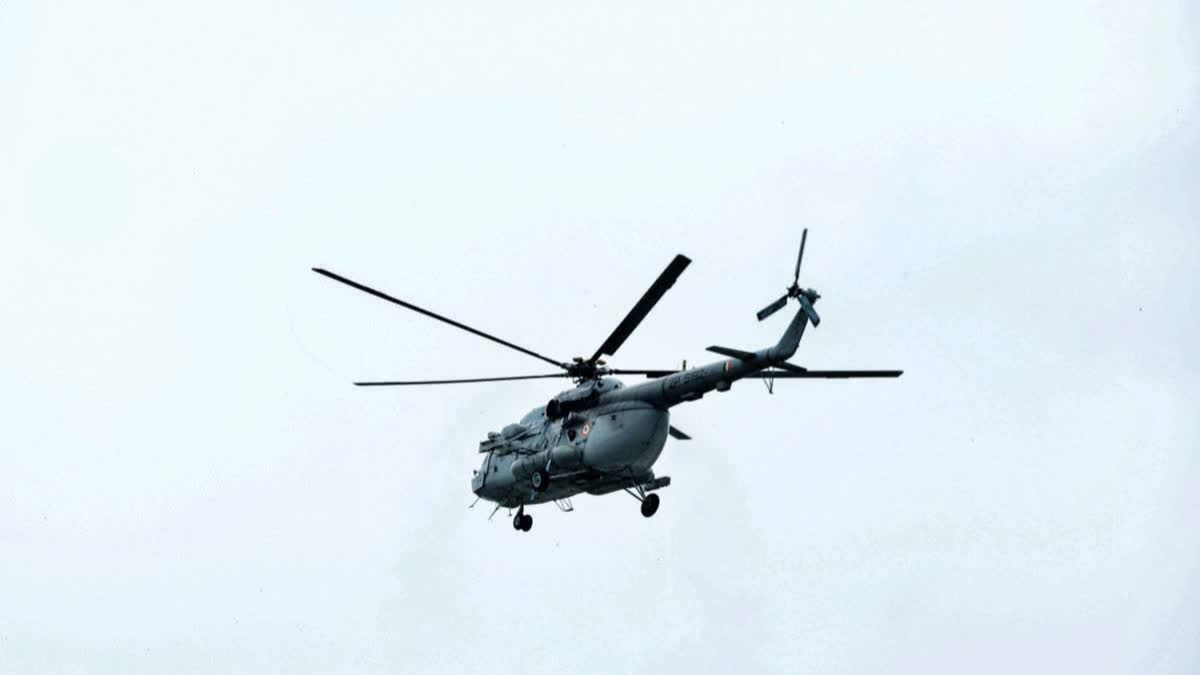Hyderabad: With the death of Iran's President Ibrahim Raisi and foreign minister in a Bell 212 helicopter in the country's mountainous northwest region near the Azerbaijan border on Sunday, fears have started looming large about safety concerns during helicopter travel.
Once again, passengers have raised eyebrows about the complexities and threats posed by these rotorcrafts. Despite safety standards in helicopters improving over the years, risks and dangers while travelling cannot be wiped out completely.
It is needless to say that vigilance is the call of the hour as compared to airplanes, these metal crafts have a 35 per cent higher risk of crashing. As per data, the rate of helicopter crashes is 9.84 for every 100,000 hours flown. In the case of planes, it is 7.26 per 100,000.
Helicopters have many unique capabilities by design. They do not need runways for landing and take-off. They can rise straight up into the air and come down in the same manner. They can also stay in one place for a long time and can travel at low altitudes as well.
However, what is noteworthy is that all these are positives if everything goes well failing which these strengths will become weaknesses. Using these special features, helicopters can reach places where airplanes cannot fly and observe any location closely from the air.
With too many moving parts, a helicopter is an extremely complex object. Hence the requirement for regular and proper maintenance. Pilot skill and maneuverability are of high significance. Here are some of the major reasons behind helicopter crashes:
1. Human errors: Mistakes on the parts of pilots, air traffic control (ATC), and maintenance personnel are common cases of helicopter crash. Compared to airplanes, helicopter pilots require more skill and alertness. The control systems in most helicopters are constantly operated by the pilots themselves as they lack an autopilot like airplanes.
In addition, pilots have to work relentlessly to process extensive information, making them tired. In such cases, many of them cannot take prudent calls, leading to errors. Pilots sometimes dare to land helicopters on unfavorable spots, ignoring the surrounding obstacles, causing serious accidents.
2. Air Traffic Control: Besides human errors, well-trained Air Traffic Controls (ATC) can also make mistakes, although not often. They can stumble upon helicopters in areas near airports and cause a pandemonium.
3. Mistakes by management staff: The staff often leave behind tools in the helicopters, making it a dangerous space for passengers. Therefore, after repairment, the helicopter is thoroughly inspected by the pilots
4. Technical issues : If any one of the main parts of the helicopter such as the main rotor (main wings), tail rotor (tail wings), rotor shaft, gearbox, or power transmission fails or malfunctions, there are chances of accidents taking place.
5. Loss of control over the main rotor: Damage to the main wings (rotor) on the top of the helicopter can cause the pilot to lose control of its rotation, causing the aircraft to collapse.
6. Tail Wings: Tail wings play a pivotal role in keeping the helicopter stable. Without them, its body would rotate in the opposite direction to that of the main wings. Therefore, if a failure occurs in this part, it becomes difficult for the pilot to control the aircraft.
7. Component or system failure: A sudden failure of any component in a helicopter can often prove to be fatal . For example- a gearbox failure can cause an immediate collapse of the aircraft.
8. Engine failure: Helicopters are expected to crash badly when their engines fail. However, in such situations, pilots avoid such dangers with their impeccable skillset. If such a situation arises in a single-engine helicopter, the pilot puts the metal body into 'autorotation'. This involves a controlled power-off descent followed by a safe landing. In a helicopter with two engines, the situation is comparatively easier. Controlled cruising with a single engine is possible when the weight it carries is not heavy. However, landing in this case requires special skills.
9. Lack of fuel, overfilling: A chopper can suffer from obstacles if it runs out of fuel. A pilot may not detect this problem due to a beeping sound in the fuel gauge. An emergency landing can prove to be dangerous if not carried out properly.
10. Environmental factors: Flying at a low altitude makes helicopters more vulnerable to bad weather and bird strikes. Helicopters are more prone to accidents due to poor visual clarity in situations such as thick snow, heavy rainfall, and strong winds. This is the reason why helicopter pilots are more likely to ask for weather reports than airplanes.
Helicopters are widely used in airlift, rescue operations, medical emergency services, patrolling, firefighting, and military operations, increasing the threat to these metal objects.
Read More:


